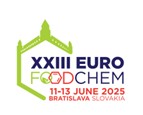Scientific journal
Journal of Food and Nutrition Research
Summary No. 2 / 2017
Cerit, I. – Yildirim, A. – Ucar, M. K. – Demirkol, A. –
Estimation of antioxidant activity of foods using artificial neural networks
Journal of Food and Nutrition Research, 56, 2017, No. 2, s. 138-148
Omca Demirkol, Department of Food Engineering, Sakarya University, Deanery Street M1, Esentepe, Sakarya 54187, Turkey. Tel.: +90264 295 59 21, fax: +90264 295 56 01, e-mail: omcad@sakarya.edu.tr
Received 23 November 2016; 1st revised 10 February 2017; accepted 5 April 2017; published online 5 May 2017.
Summary: The aim of this study was to demonstrate that artificial neural networks (ANN) is an economical and rapid method to estimate antioxidant activity of foods. Phenolic content of different food varieties (red pepper and grape seeds) was used as two input variables, and ferric ion reducing antioxidant power (FRAP) values were estimated as output. The number of total experimental data was 150 (70 % for train, 30 % for test). The developed ANN was able to reveal the relationship between phenolic compounds and antioxidant activity of food with the feed-forward model. The estimated FRAP values calculated by ANN correlated with experimental FRAP values with high correlation coefficients. In addition, error rate was found to be approximately 10 %, which corresponds to approximately 90 % of success. The relationship between antioxidant substances and antioxidant activity demonstrated that ANN can be used to determine the antioxidant properties of foods and results of this study showed that this was possible. By this way, it was demonstrated that ANN is a reliable software-based method to estimate antioxidant capacities of foods with savings of time, labour and experimental costs.
Keywords: antioxidant activity; ferric ion reducing antioxidant power; phenolic compounds; artificial neural network
Download:
(pdf, 448.4 Kb, 2508x)










